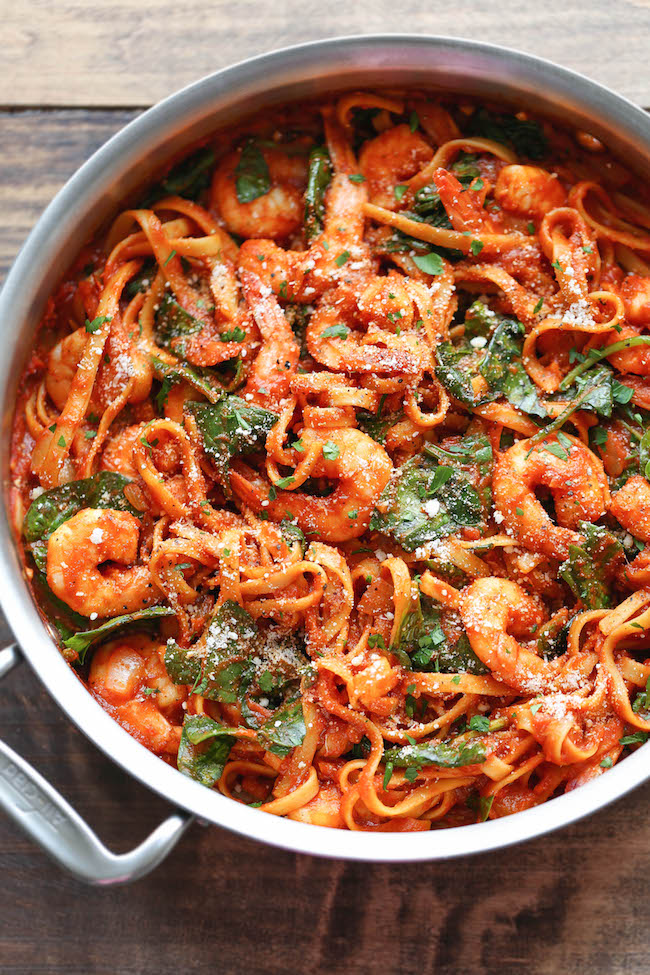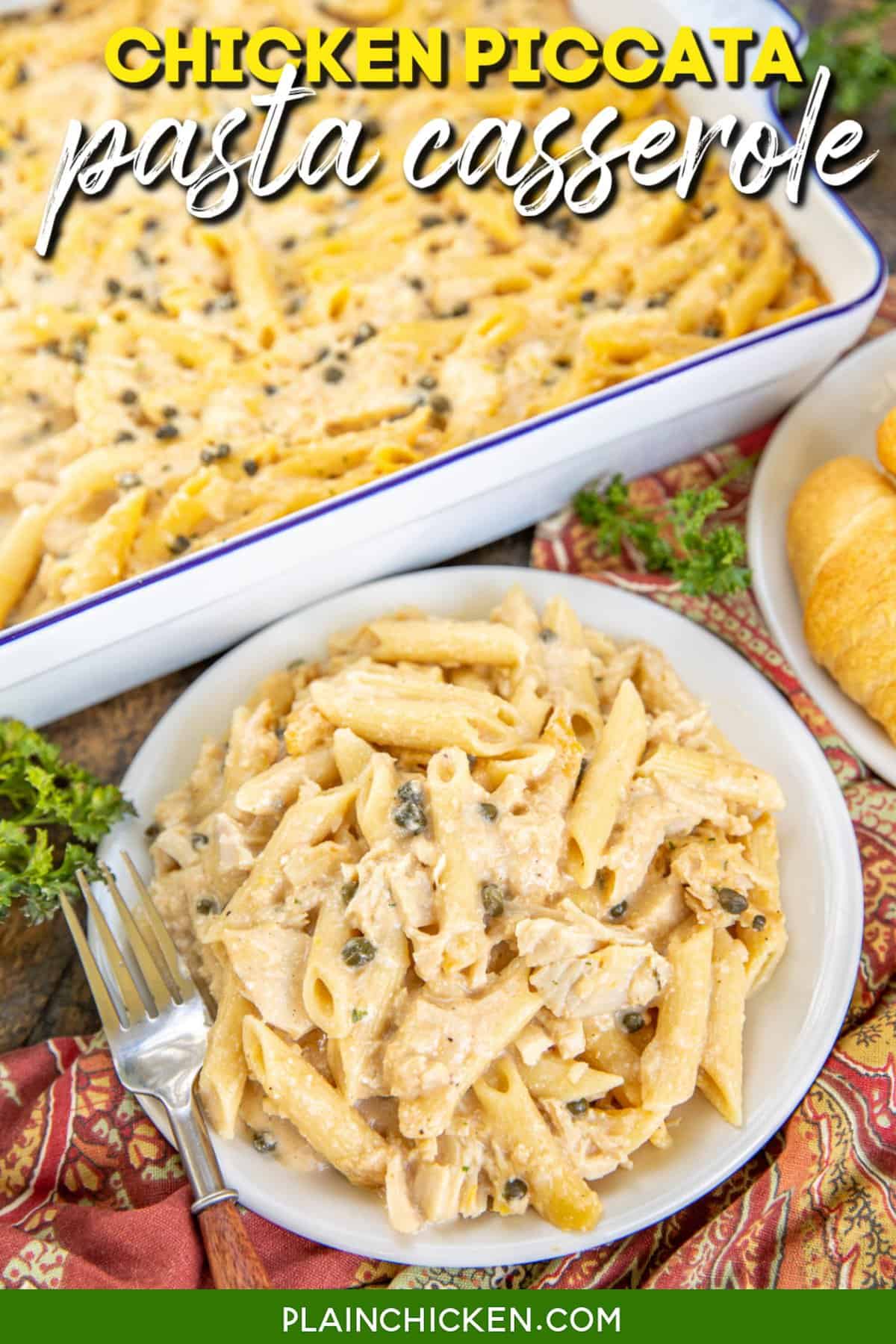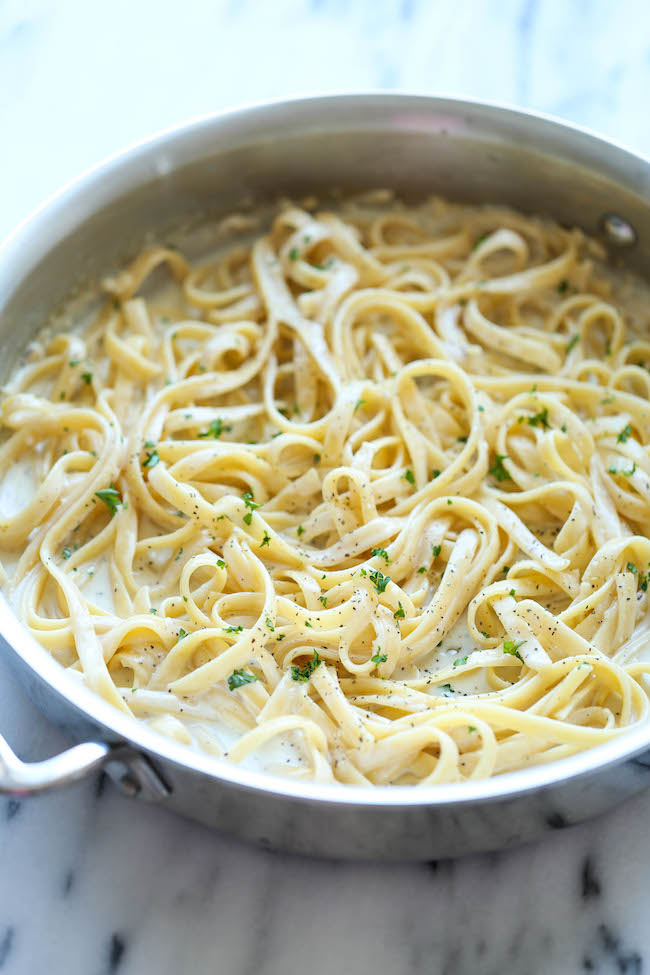To add Parmesan cheese to pasta, grate the cheese and sprinkle it over the cooked pasta. Enhance the flavor of your pasta dish by incorporating the rich and savory taste of Parmesan cheese.
Parmesan cheese adds a nutty and salty kick to your pasta, elevating the overall taste experience. By sprinkling grated Parmesan over your cooked pasta, you can ensure that each bite is full of cheesy goodness. Whether you prefer a classic spaghetti aglio e olio or a creamy fettuccine Alfredo, Parmesan cheese is a versatile and delicious addition to any pasta recipe.
Follow these simple steps to incorporate Parmesan cheese into your pasta dishes and delight your taste buds with each forkful.

Credit: damndelicious.net
The Basics Of Parmesan Cheese
When adding Parmesan cheese to pasta, it is important to understand the basics. Parmesan cheese is a hard, aged cheese made from cow’s milk. It has a rich, nutty flavor and a granular texture that adds depth to pasta dishes.
There are different types of Parmesan cheese, including Parmigiano-Reggiano and Grana Padano. Parmigiano-Reggiano is a PDO (Protected Designation of Origin) cheese that is made in specific regions of Italy. It has a complex flavor and is often considered the best Parmesan cheese. Grana Padano is similar to Parmigiano-Reggiano but is made in a slightly different way.
When grating Parmesan cheese, it is best to use a microplane or a box grater with small holes. This will produce fine, fluffy shreds that will melt easily into your pasta. Be sure to grate the cheese just before using it to preserve its freshness and flavor.
Overall, understanding the basics of Parmesan cheese and how to grate it properly will enhance the flavor of your pasta dishes and elevate your culinary experience.
Best Pasta Dishes For Parmesan Cheese
Indulge in the best pasta dishes topped with freshly grated Parmesan cheese for a flavorful twist. Simply sprinkle the cheese over your favorite pasta dishes for a rich and savory taste experience. Elevate your pasta game with the creamy goodness of Parmesan cheese.
| For a classic touch, try Spaghetti Aglio e Olio – simple and flavorful. |
| Indulge in the velvety richness of Creamy Fettuccine Alfredo – a comforting choice. |
Enhancing Flavor With Parmesan Cheese
Enhance pasta dishes by adding Parmesan. Boost flavor with Parmesan rinds in broths. Create crispy Parmesan cheese chips. Sprinkle grated Parmesan on top of pasta dishes for a burst of flavor.
Incorporating Parmesan Cheese Into Pasta
When making pasta, incorporating Parmesan cheese into the sauce can greatly enhance the flavor. By adding grated Parmesan cheese to your pasta sauce, you can achieve a rich and savory taste that complements the dish perfectly. The nutty and salty flavors of Parmesan elevate the overall taste profile of the sauce, making it more satisfying and delicious. Topping your cooked pasta with shaved Parmesan is another great way to bring out the flavors of the cheese. The heat from the pasta will slightly melt the cheese, creating a creamy and indulgent experience with every bite. Whether you choose to add Parmesan to the sauce or top your pasta with it, this classic Italian cheese is guaranteed to take your pasta dish to the next level.
Pairing Pasta And Parmesan With Wines
When adding Parmesan cheese to pasta, it’s essential to consider the perfect wine pairing. For light, delicate pasta dishes, such as seafood or cream-based sauces, a crisp, acidic white wine like Pinot Grigio complements the flavors beautifully. On the other hand, for heartier pasta dishes, such as those with meat or tomato-based sauces, a light red wine, such as Chianti, enhances the savory elements of the dish. It’s all about finding a balance between the flavors of the pasta and cheese with the characteristics of the wine.

Credit: www.plainchicken.com
Exploring Vegan Alternatives To Parmesan Cheese
When making vegan pasta dishes, it’s important to find suitable alternatives to Parmesan cheese. One popular option is homemade cashew Parmesan, which provides a similar texture and flavor. To make this vegan Parmesan, simply blend cashews with nutritional yeast flakes and a pinch of salt to create a delicious cheesy topping for your pasta. Nutritional yeast flakes offer a savory, umami flavor that mimics the taste of Parmesan cheese, making it an ideal substitution for those following a vegan diet. This simple and versatile alternative can be sprinkled generously over your favorite pasta dishes, providing a satisfying and flavorful addition without sacrificing dietary preferences.
Sourcing And Storing Parmesan Cheese
Sourcing and Storing Parmesan Cheese: Selecting high-quality Parmesan is essential to enhance the flavor of your pasta dish. Look for Parmesan that is aged for at least 12 months, as it will have a richer and more intense taste. Avoid pre-grated Parmesan and opt for a block of cheese instead, as it tends to be of higher quality and stays fresh for longer.
Selecting High-Quality Parmesan: When choosing Parmesan, always check for a PDO (Protected Designation of Origin) label, which ensures that the cheese is produced according to specific traditional methods. Inspect the rind, which should be firm and elastic, and the color, which should be pale yellow. Consider purchasing from local cheese shops or specialty stores for a wider selection and expert guidance.
Properly Storing Parmesan Cheese: To ensure your Parmesan cheese stays fresh and flavorful, store it correctly. Wrap it tightly in parchment paper or wax paper and then seal it in an airtight container or resealable plastic bag. Store it in the refrigerator, away from strong odors, for up to six months. Remember to grate the cheese just before using it to preserve its aroma and taste.
Final Touches And Presentation
Garnishing with Fresh Herbs: Sprinkle chopped basil and oregano over pasta for added freshness. Serving Parmesan Cheese Tableside: Grate fresh Parmesan cheese using a microplane over each dish for a delightful finishing touch.

Credit: damndelicious.net
Conclusion
To sum up, adding Parmesan cheese to pasta is a simple yet flavorful way to elevate your dish. Its nutty and salty taste pairs perfectly with the natural sweetness of tomatoes or the richness of creamy sauces. Whether you prefer to grate it directly on top or melt it into the pasta itself, Parmesan cheese adds a delightful twist to your favorite pasta recipes.
So go ahead, and embrace the deliciousness that this versatile cheese brings to the table! Enjoy your cheesy pasta adventures!





